Coronavirus Guidance for Food Facilities
![]() Print this Article | Send to Colleague
Print this Article | Send to Colleague
By John Kimble, Safe Food Alliance
In the wake of the current COVID-19 virus outbreak and response measures being implemented globally, Safe Food Alliance felt it was important to do our part in supporting the food industry. We hope we can provide appropriate and practical guidance for you to consider when implementing practices in your facility to help protect our food and ensure business continuity.
First Think About Risk
Any food safety professional knows that before implementing controls, you need to understand the risk. If you identify where contamination can come from, you can make sound decisions about where to invest your resources.
Regarding this current situation, the only likely source of the virus is people, so we’re focused on a few things:
. Visitors who may be ill or may be carrying the virus
. Employees who come to work after exposure, particularly when ill
. People sneezing and coughing and then spreading the virus with their hands
Emphasize What You Already Have in Place
You already have some essential programs in place. Make sure your customers know that, even before the outbreak of this new virus, your company had preventive measures in place to ensure your products are as safe as possible.
Preventive Measure
. Food Defense and security measures to prohibit unauthorized visitors and to ensure visitors and employees only enter through approved site entry points
. General employee hygiene/cleanliness rules, including regular hand washing and wearing clean clothing, along with protective clothing such as smocks (if used at your company)
. Numerous handwashing stations so that employees can wash regularly and whenever needed
. Regular attendee training on proper handwashing procedures
. Prohibiting employees and visitors from entering the facility if ill and exhibiting specific symptoms
. General sanitation procedures for cleaning and sanitation of equipment and common areas
. Zoning controls for exposed product areas (if you have them) such as restricted access and dedicated employees, limited traffic between areas, special hygiene measures like foot baths, etc.
Describe What You’re Doing Now
Every company and facility are different, and response plans will vary. Below are a few ideas you might consider implementing to help reinforce your programs in light of this new, emerging risk. Your company will most likely not choose to perform all of these ideas but should give you helpful suggestions.
People
. Anyone exposed to someone who tested positive for the virus, must not enter the site until 14 days have passed.
. Anyone who has been on a cruise in the past 14 days cannot enter the site.
. If employees develop a cough, body aches, fever, or respiratory issues, they are required to stay home. Consider whether you should need a doctor’s note before returning to work, or whether it may be best to have them stay home and avoid the risk of exposure to other people.
. Canceling any non-essential travel (or any travel at all)
Hygiene
. Reinforcing good hygiene practices that are already in place
. Educating employees about the risks of the virus, and how it can spread, i.e., touching the face, sneezing, and coughing, and hand contact
. Emphasizing the importance of controlling sneezes, or your company could even have employees wear face coverings (masks may be useful, or even a tight-mesh beard net can limit spittle from spreading)
. Encouraging more frequent hand washing and making additional hand sanitizer stations available
. Using disposable gloves where appropriate
Plant Management
. Supervisors conduct visual screening of employees at the beginning of each shift for any signs of illness
. Implementing ‘personal space’ guidelines based on health department recommendations, and guidance to avoid any direct personal contact
. Limiting the number of employees taking breaks at one time
. Prohibiting visitors except through special exception from management, or implementing temporary policies for visitors
. Tighter rules for drivers delivering loads to the site (having them stay in the cab, etc.)
. Increased security vigilance on-site, perhaps even reviewing your existing programs (internal audit) to ensure the company has identified any areas that you may want to fortify
Sanitation
. Implementing frequent cleaning and sanitizing of common areas
Our Common Goal
If your customers are asking you for information about preventive activities, pay attention to the language of your correspondence. The goal is to foster trust and confidence on the part of your customers by helping them understand that you are taking the situation seriously and that you’re proactive in ensuring products are as safe as possible.
It’s crucial at this time that we all do what we can to protect our products and our companies, through sharing and implementing best practices. Please feel free to contact us anytime with questions.
Please note, the above ideas are not intended to be mistaken for any form of legal advice or recommendations, but rather are helpful hints for food facilities to consider given the evolving situation.



